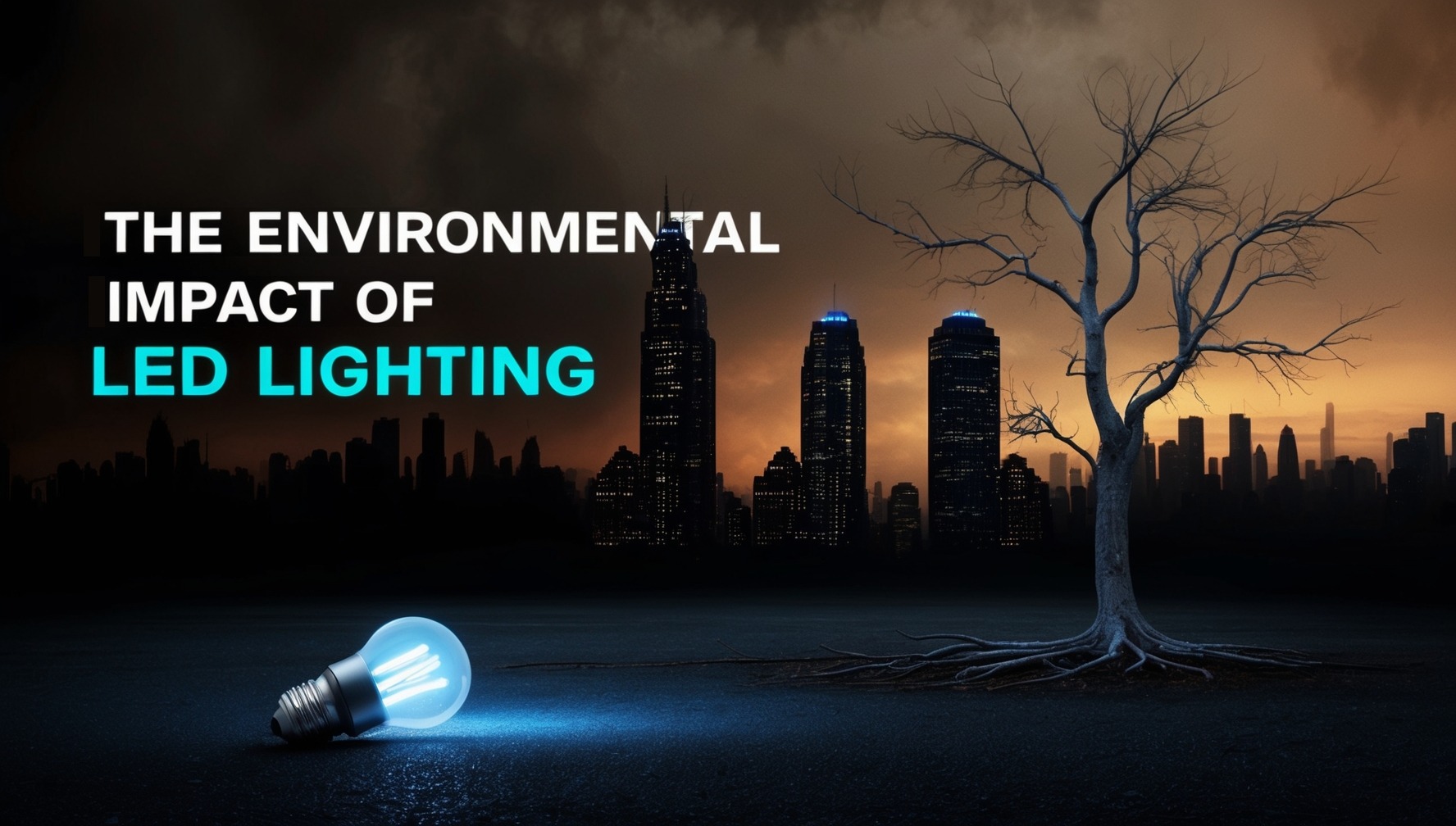As the world increasingly embraces sustainable practices, the environmental impact of our choices, including the lighting we use, has come under scrutiny. LED (Light Emitting Diode) lighting has emerged as a frontrunner in environmentally friendly lighting solutions. This article explores the various ways LED lighting positively impacts the environment, from reducing energy consumption to minimizing hazardous waste.
Energy Efficiency and Reduced Greenhouse Gas Emissions
One of the most significant environmental benefits of LED lighting is its energy efficiency, especially when considering LEDs vs. traditional lighting. LEDs use up to 80% less energy than traditional incandescent bulbs and about 50% less than compact fluorescent lamps (CFLs). This substantial reduction in energy consumption directly translates into lower greenhouse gas emissions, as less electricity needs to be generated by power plants.
Power plants, especially those that rely on fossil fuels, are major contributors to greenhouse gas emissions, which drive climate change. By reducing the demand for electricity through the use of energy-efficient LEDs, we can decrease the carbon footprint associated with lighting. Widespread adoption of LED technology has the potential to significantly reduce global energy consumption and mitigate the environmental impact of energy production.
Longevity and Waste Reduction
LEDs are known for their long lifespan, lasting up to 25 times longer than traditional incandescent bulbs and several times longer than CFLs. A typical LED can last up to 50,000 hours or more, while incandescent bulbs generally last around 1,000 hours, and CFLs about 10,000 hours. This extended lifespan means fewer bulbs need to be manufactured, transported, and disposed of, leading to a significant reduction in waste.
The decreased frequency of bulb replacement also reduces the environmental burden associated with the production and disposal of lighting products. Less waste in landfills and reduced demand for raw materials contribute to a more sustainable lifecycle for lighting solutions.
Absence of Hazardous Materials
Unlike CFLs, which contain mercury—a toxic substance that poses environmental and health risks—LEDs do not contain hazardous materials. This makes LEDs safer for both the environment and human health, as there is no risk of mercury contamination during use or disposal.
The absence of hazardous materials in LEDs simplifies the recycling process and reduces the potential for environmental pollution. As governments and organizations strive to reduce the use of toxic substances in consumer products, LEDs stand out as a safer, more sustainable option for lighting.
Lower Heat Emission and Reduced Cooling Costs
LEDs produce very little heat compared to traditional incandescent bulbs, which release about 90% of their energy as heat. This low heat emission not only makes LEDs more energy-efficient but also contributes to reduced cooling costs in buildings.
In hot climates or during warm seasons, the reduced heat output of LEDs can lessen the need for air conditioning, further decreasing energy consumption and the associated environmental impact. This dual benefit of lower energy use for both lighting and cooling makes LEDs a critical component of sustainable building practices.
Versatility in Eco-Friendly Applications
LED technology’s versatility extends to various eco-friendly applications, such as solar-powered lighting systems. LEDs are ideal for use in conjunction with renewable energy sources like solar power, as their low energy requirements make them compatible with solar panels and other green energy solutions.
LEDs are also used in energy-efficient buildings, smart lighting systems, and public infrastructure, all of which contribute to a more sustainable and environmentally responsible society. Their adaptability to various applications underscores the role of LED technology in promoting environmental sustainability, highlighting its importance in the future of energy-efficient lighting.
Contribution to Sustainable Urban Development
As cities grow and evolve, the need for sustainable urban development becomes increasingly important. LED lighting is playing a crucial role in this development by providing energy-efficient and environmentally friendly lighting solutions for streets, public spaces, and buildings.
LED streetlights, for example, are being adopted by cities around the world to replace outdated and inefficient lighting systems. These LED systems not only reduce energy consumption and emissions but also offer better visibility and safety for residents. Additionally, the reduced maintenance needs of LEDs contribute to lower operational costs and less environmental impact over time.
Encouraging Recycling and Responsible Disposal
The long lifespan of LEDs contributes to waste reduction, but it also emphasizes the importance of recycling when the lights eventually reach the end of their life. Unlike CFLs, which require careful handling due to their mercury content, LEDs can be recycled more easily. Many components of LED bulbs, such as metal heatsinks and electronic parts, can be reclaimed and reused in new products.
Encouraging the recycling of LED lights helps close the loop in the product lifecycle, ensuring that valuable materials are not lost to landfills. Responsible disposal practices further minimize the environmental impact of lighting solutions, making LED technology a cornerstone of sustainable living.
Conclusion: LED Lighting as a Sustainable Choice
LED lighting offers numerous environmental benefits, from significant energy savings and reduced greenhouse gas emissions to minimized waste and the absence of hazardous materials. As we seek to build a more sustainable future, the adoption of LED technology is a crucial step in reducing our environmental footprint. By choosing LEDs, individuals, businesses, and governments can contribute to a cleaner, greener planet for generations to come.
